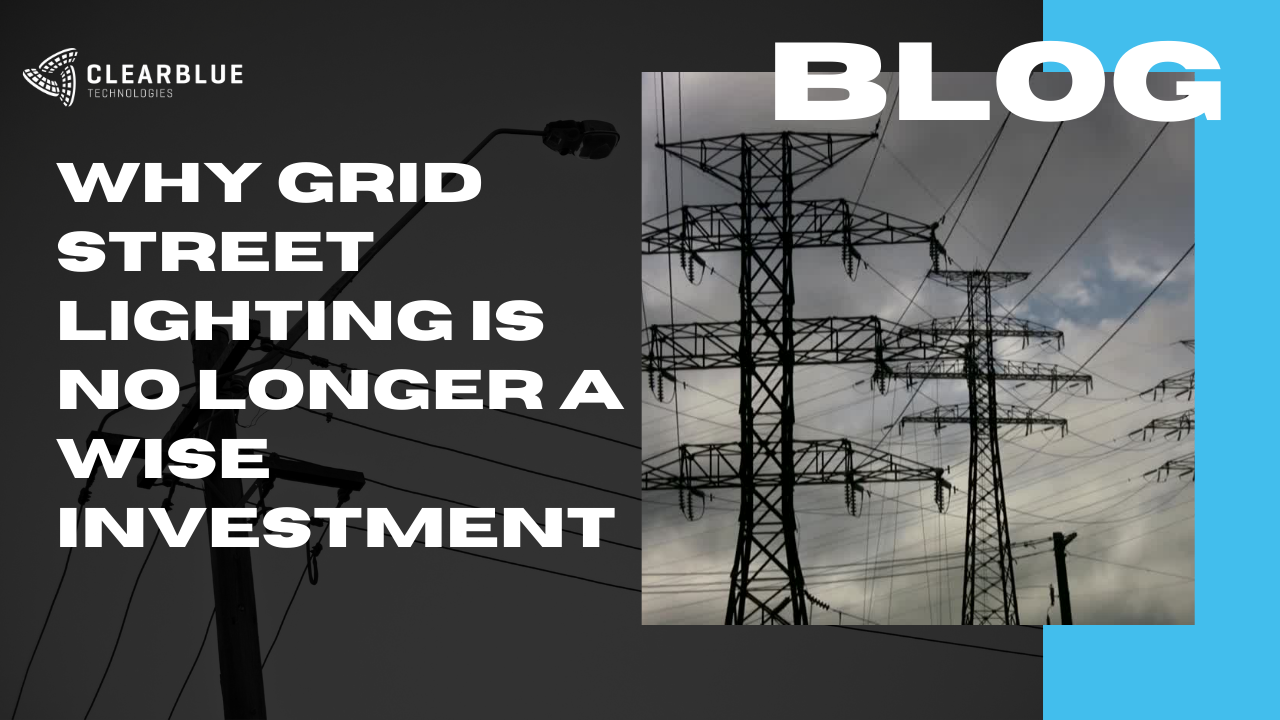Why Grid Street Lighting is No Longer a Wise Investment

Traditional grid street lighting is becoming a less favourable choice for municipalities and businesses. Why? Well, the costs of transmission and distribution for grid power are consistently increasing, driving up the energy costs for street lighting systems. Transmission and distribution costs will continue to grow with ageing grid infrastructure and increased stress on the grid. The grid’s vulnerability to blackouts and the emissions it produces are also making municipalities hesitant. Off-grid street lighting is proving to be the more economical, reliable, and environmentally friendly option.

The Challenge
Primarily, grid-based street lighting is becoming too expensive.
Transmission and distribution make up the lion’s share of your street lighting
system’s cost. Moreover, these costs have been going up significantly due to
necessary investments in ageing grid infrastructure and expanding the grid into
new areas.
In turn, overall energy costs have increased. According to EnergyWatch, despite decreasing actual electricity costs, overall prices have inflated because of substantial transmission and distribution costs. On top of this, the Edison Electric Institute foresees the need for an investment of $900 billion in the U.S. grid, which will push energy costs up further in the future.
These cost increases mean that grid solutions with low capital costs and high operating costs are far less valuable. Solutions with higher capital costs relative to operational costs will cost less over time than the inverse options because of the aforementioned increasing operating costs. Therefore, a capital-intensive, low operating expense solution will be significantly advantageous over the long term of the infrastructure’s life.
What’s more? Grid power is inefficient and produces substantial carbon emissions. Thus, grid power does not fit with the goals of “going green,” which many cities have now adopted. Finally, grid power is not resilient, and it’s vulnerable to the effects of extreme weather events, which are becoming increasingly common. Overall, grid power is a risky investment, and its exorbitant costs can no longer be justified.

One Municipality’s Utility Bill
In one residential town in Western Canada, the municipality pays an
annual street lighting bill of $200,000. This bill is for a town of 3500 people!
Unsurprisingly, 95% of these costs are associated with the transmission and
distribution of power, not the actual energy costs.
That is an enormous investment for a grid street lighting system, which is susceptible to widespread blackouts from extreme weather events. Also, the outdated grid infrastructure will likely need maintenance and additional investment, causing costs to increase in the future.
Consequently, the town is investing in an energy management program with the hope of reducing the overall, long-term costs of their street lighting system, as well as reducing their total environmental footprint.

What is the solution?
The solution to this problem is off-grid power. With off-grid
power, power is generated from local sources, eliminating the transmission and
distribution costs that make grid power so expensive. In addition, when you
have Smart Off-Grid power, your energy is managed highly efficiently.
With smart power you can right-size your system to work within your capital budget while ensuring uptime because of advanced energy management.
As well, remote management capabilities through Smart Off-Grid drastically
diminish your operation and maintenance costs. Lower ongoing costs provide a significant
advantage over grid power in which regular maintenance is needed for ageing,
overburdened infrastructure. Finally, going with off-grid power also offers a
solution that has no carbon output and is resilient to major weather events.
Ultimately, off-grid power, particularly Smart Off-Grid, provides
the ideal solution to the glaring shortcomings of grid power. Municipalities are
moving toward off-grid, managed power street lighting solutions because they
see the major cost advantage versus solutions in which you pay high ongoing
costs for transmission and distribution. As well, as cities “Go Green,”
off-grid power will become increasingly important.

